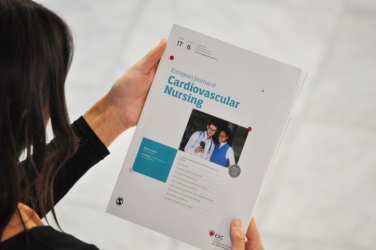What is the “Patient Perspective”?
We invite patients who have been affected by the condition or treatments investigated in the original research reported in the articles to discuss the issues raised and to give their perspective. This may, for example, be on the care they received or the impact of the condition on their lives.
The value of these perspectives lies mainly, I believe, in helping health professionals to understand the patient and family experience of healthcare and reflect on how they deliver care. The perspectives are published in the journal and so have reached that readership.
So far we have published five perspectives with another in press. We also have a few more in the pipeline. We have not conducted a formal evaluation of the perspectives but, anecdotally, they seem to be quite popular. It is interesting that a couple of the perspectives published so far have been written by nurses who have found themselves on the other side of the fence receiving health care themselves for cardiovascular conditions. Of course it is inevitable that each of us at some point experience being a patient and this reveals the vulnerability of us all and should bring into sharp focus how important it is for us, as health professionals, to reflect on the way we deliver care.
These articles can be found on the EJCN website by searching under the ‘more content’ tab on the top menu and selecting ‘Patient Perspectives’ – or here directly:
European Journal of Cardiovascular Nursing
What is the 'Science for Patients' initiative?
 For this initiative, we select systematic reviews published in EJCN that have conclusive recommendations for care and translate them into lay language in an article. We also use images to make the articles more accessible.
For this initiative, we select systematic reviews published in EJCN that have conclusive recommendations for care and translate them into lay language in an article. We also use images to make the articles more accessible.
These Science for Patients articles have the potential to bring the latest in medical science to patients, their families and other members of the public. Systematic reviews include a lot of scientific language and complex methodology which may be a barrier to some people in accessing the content. What the Science for Patients articles do is to provide simple explanation of the terminology used in the review and to present the key messages so that the reader can be aware of what to expect of their care.
The articles are published in the journal but we are also exploring ways to promote them amongst patient forums like the Global Heart Hub (GHH). This organization has provided links to the articles to their membership and conducted a small survey of their affiliate groups to investigate their opinion of the articles. They found that 94% of respondents said that it was somewhat or extremely important to make scientific publications accessible to the patient community, and some of the most common barriers included jargon, paywalls and length. Respondents rated the Science for Patients series highly, with 88% rating it ‘excellent’ or ‘good’, and 97% expressed interest in reading future articles within the series.
So far we have published two of these articles and have another one in progress:
- Improving the experience of patients living with an implantable cardioverter defibrillator
- Patients, family members, and health professionals making decisions together about starting blood thinning treatment to prevent stroke in patients with an irregular heart rhythm
Written in collaboration with ACNAP Communication Committee Chair, Britt Borregaard (Denmark).


 Our mission: To reduce the burden of cardiovascular disease.
Our mission: To reduce the burden of cardiovascular disease.